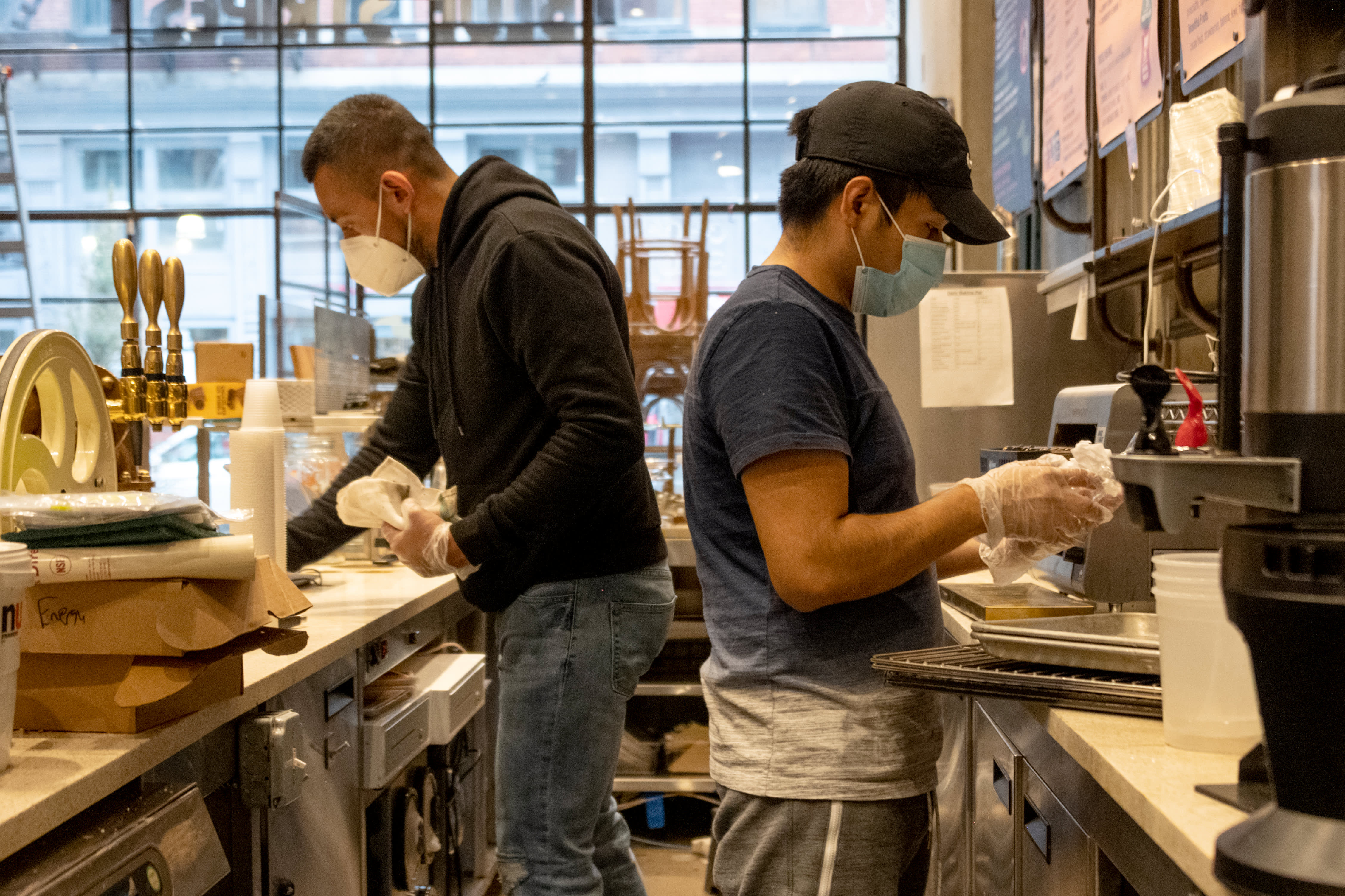
Nonfarm payrolls soared by 4.8 million in June and the unemployment rate fell to 11.1% as the U.S. continued its reopening from the coronavirus pandemic, the Labor Department said Thursday.
Economists surveyed by Dow Jones had been expecting a 2.9 million increase and a jobless rate of 12.4%. The report was released a day earlier than usual due to the July Fourth holiday.
The jobs growth marked a big leap from the 2.7 million in May, which was revised up by 190,000. The June total is easily the largest single-month gain in U.S. history.
“Today’s announcement proves that our economy is roaring back. It’s coming back extremely strong,” President Donald Trump said in a news conference about an hour after the numbers were released. He pointed specifically to a sharp drop in the unemployment for Blacks that fell from 16.8% to 15.4%. “These are historic numbers.”
The numbers capture the move by all 50 states to get activity moving again after the virus seized up much of the U.S., particularly service-related industries.
Wall Street reacted positively to the report, with futures indicating a more than 400-point gain at the open.
However, because the government survey comes from the middle of the month, it does not account for the suspension or rollbacks in regions hit by a resurgence in coronavirus cases.
“The 4.8 million rise in non-farm payrolls in June provides further confirmation that the initial economic rebound has been far faster than we and most others anticipated,” said Michael Pearce, senior U.S. economist at Capital Economics. “But that still leaves employment 9.6% below its February level and with the spread of the virus accelerating again, we expect the recovery from here will be a lot bumpier and job gains far slower on average.”
Indeed, new jobless claims remained stubbornly high last week, with another 1.427 million Americans filing, above the estimate of 1.38 million, the Labor Department said in a separate report Thursday. Continuing claims actually increased by 59,000 to 19.3 million, highlighting the jobless problem likely exacerbated by the ongoing presence of the virus and its economic impact.
“This slowdown is going to have an impact, absolutely. How big is hard to say,” said Steve Blitz, chief U.S. economist at TS Lombard. “There are a lot of unknowns, and it would be silly on the fiscal side to pull back now on stimulus.”
Leisure and hospitality again accounted for the biggest jump, as the sector saw a 2.1 million gain, accounting for about 40% of the total growth.
Another big contributor to the decline of the jobless rate was a plunge in those on temporary layoff. That total fell by 4.8 million in June to 10.6 million after a decrease of 2.7 million in May. The short-term jobless level fell by 1 million to 2.8 million.
However, those reporting permanent job losses also jumped, rising by 588,000 to 2.883 million, the highest level in more than six years.
The labor force participation level saw a sharp bump, rising to 61.5%, which brings it to 1.9 percentage points below its February level, a month before the coronavirus pandemic shut down much of the U.S. economy.
Jobs were equally balanced at 2.4 million apiece for full- and part-time workers.
Retail also saw a sizable boost, with a gain of 740,000. Education and health services rose 568,000 and manufacturing was up 356,000.
“Manufacturing looks like it’s ready to take off to a level that it’s never been,” Trump said. “A lot of that has to do with our trade policy, because we’re bringing manufacturing back to our country.”
Personal and laundry services saw another major gain, at 264,000, part of an increase in other services that totaled 357,000. Professional and business services gained 306,000, construction was up 158,000 and transportation and warehousing saw a 99,000 increase.
Citgroup economists say the composition of job gains suggests that hiring will continue to be strong, even if June might mark the peak. They said current forecasting models are too dependent on weekly claims data, which are distorted because workers hired part-time can still get benefits.
“A second consecutive large upside surprise to hiring relative to consensus confirms our view that the reopening rebound would be much more robust than most expected a couple months ago,” Citi economist Andrew Hollenhorst said in a note. “We are particularly encouraged by the composition of hiring, which shows potential for further large gains in manufacturing, construction, and healthcare jobs, which are relatively insulated from social distancing.”
Average hourly earnings fell 1.2% from May as more lower-wage earners returned to their jobs but were still up 5% from a year ago. The average work week slipped by 0.2 hours to 34.5 hours.
The headline unemployment rate was understated sightly due to counting errors at the Bureau of Labor Statistics. Workers who still have jobs but have not been working are being counted as employed and even though they are supposed to be considered unemployed under BLS rules.
However, the BLS said that discrepancy “declined considerably” in June, making the actual unemployment rate only about 1 percentage point higher than the reported level.
An alternative measure of unemployment that includes discouraged workers and the underemployed fell to 18% from 21.2%.



